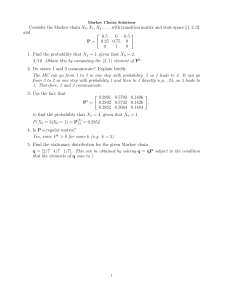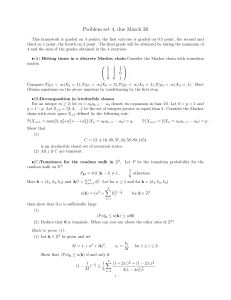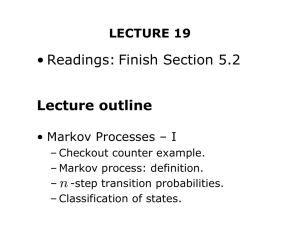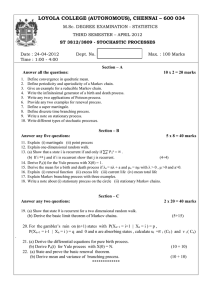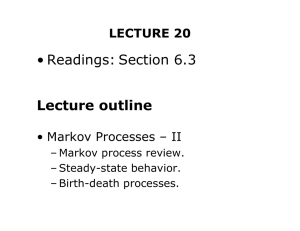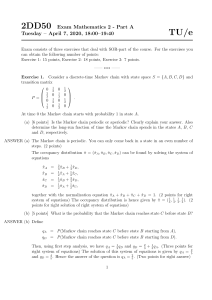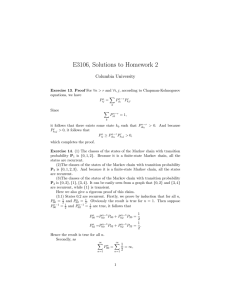Massachusetts Institute of Technology
advertisement
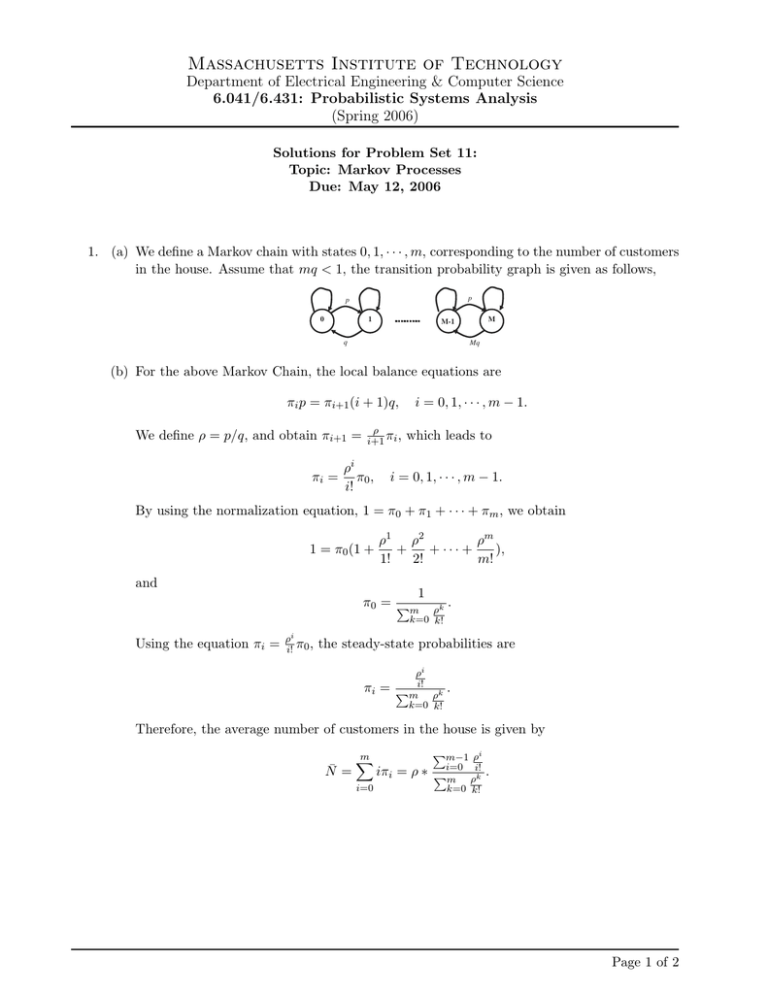
Massachusetts Institute of Technology Department of Electrical Engineering & Computer Science 6.041/6.431: Probabilistic Systems Analysis (Spring 2006) Solutions for Problem Set 11: Topic: Markov Processes Due: May 12, 2006 1. (a) We define a Markov chain with states 0, 1, · · · , m, corresponding to the number of customers in the house. Assume that mq < 1, the transition probability graph is given as follows, p p 0 1 M M-1 q Mq (b) For the above Markov Chain, the local balance equations are πi p = πi+1 (i + 1)q, We define ρ = p/q, and obtain πi+1 = πi = ρ i+1 πi , ρi π0 , i! i = 0, 1, · · · , m − 1. which leads to i = 0, 1, · · · , m − 1. By using the normalization equation, 1 = π0 + π1 + · · · + πm , we obtain 1 = π0 (1 + and ρm ρ1 ρ2 + + ··· + ), 1! 2! m! 1 π0 = Pm ρk k=0 k! Using the equation πi = ρi i! π0 , . the steady-state probabilities are ρi πi = Pmi! ρk k=0 k! . Therefore, the average number of customers in the house is given by N̄ = m X i=0 iπi = ρ ∗ Pm−1 ρi i=0 i! Pm ρk k=0 k! . Page 1 of 2 Massachusetts Institute of Technology Department of Electrical Engineering & Computer Science 6.041/6.431: Probabilistic Systems Analysis (Spring 2006) 2. (a) Denote by (x, y) the score of Sam and Pat respectively, a Markov chain that describes the game is 2/3 2,0 1,0 1/3 2/3 0,0 1/3 2/3 0,1 0,2 1/3 Note that the game ends when either state (0, 2) or (2, 0) is entered. (b) Since we have a finite number of states, a state is recurrent if and only if it is accessible from all the states that are accessible from it, and therefore, states (0, 0), (0, 1) and (1, 0) are transient and states (0, 2) and (2, 0) are recurrent. (c) The probability that Pat wins is the probability that we get absorbed to state (0, 2). Setting up the equations, we solve for a(1,0) , a(0,0) and a(0,1) a(0,1) = a(0,0) = a(1,0) = 2 1 + a 3 3 (0,0) 2 1 a(0,1) + a(1,0) 3 3 2 a 3 (0,0) which yields that following a(0,1) = a(0,0) = a(1,0) = 14 15 12 15 8 15 Therefore the probability of Pat winning is equal to 12/15 = 0.8. Page 2 of 2


